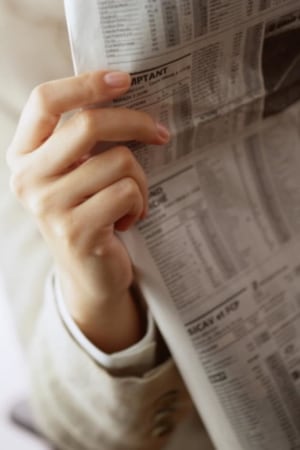
Huge upswings in newspaper and magazine readerships have been suggested by the release of new readership data via the EMMA metric compared to that compiled by Roy Morgan. The implication is that newspapers and magazines are undervalued.
From a survey independently put together by Ipsos but funded by the publishing industry, the numbers were expected to be higher than those compiled by incumbent readership data provider, Roy Morgan. However, the scale of many of the increases may surprise some.
The data has been years in the making. During that time the speed at which ad dollars have been taken away from news and magazines and into other channels has accelerated.
The resulting data throws up reach and frequency issues for media buyers to digest. Those contacted by AdNews said it was too soon to comment and insisted that readership data was one part of a “much more sophisticated” strategy.
But if media buyers take the data at face value, news and magazines become more favourable in the advertising mix because CPMs would plummet as a result.
There remain many unknowns, such as what EMMA will cost, or whether it will initially be offered for free beyond the initial trial periods with media agencies and owners. That may have to happen, some have suggested, until the richness of the offering can match that of the incumbent so as to avoid additional cost for industry.
But what is now confirmed is that people respond very differently to the very different types of survey and stimuli employed by the two providers.
The numbers: Print
In print, the EMMA data suggests some 45% more people read the weekday edition of the Sydney Morning Herald than suggested by Roy Morgan data last week (814,000 EMMA compared to 562,000 Roy Morgan).
Download the Print Audience Report for Newspapers.
The Australian receives a similar percentage increase (47%). Emma data suggests 540,000 people read its weekday edition compared to 367,000 under Roy Morgan.
Likewise the Daily Telegraph has a far greater readership under EMMA, up some 55% to 1.17 million compared to 759,000 via the Roy Morgan metric.
Meanwhile the Australian Financial Review weekday print edition also has a third more readers (312,000) in Ipsos’ view than Roy Morgan’s (236,000).
The numbers: Masthead
In terms of total masthead readership across all formats (people accessing content via print, web, tablet and mobile), the numbers were massive.
Download the Total Audience Report for Newspapers.
Over 4.5million people read the Sydney Morning Herald in one format or another every month, the Ipsos data, suggests (the data is based on a digital panel of 54,000 people aged 14+ over 12 months to end of June 2013 then fused with a month’s worth of Nielsen online data). Almost 2.5 million access the SMH website a month, some 626,000 people visit it via their mobile, and around 654,000 via their tablet, according to the figures.
The Herald Sun has the next largest total audience with almost 4.1 million monthly readers , three quarters of which come from print alone. The Daily Telegraph follows in third (4.03 million with 3.3 million from print alone).
In fourth, The Age has 3.3 million monthly readers, the data suggests, with almost as many reading the paper online as in print. The Age also has the second highest readership accessing via tablet or mobile (855,000) according to the Ipsos numbers.
The Australian’s total audience is almost 3.2 million. The Ipsos data puts that a 2.4 million in print, 879,000 online and 413,000 via tablet and mobile.
The numbers: Newspaper inserted mags
The EMMA audience numbers for newspaper inserted magazines (NIMs) were a mixed bag. Compared to the numbers released by Roy Morgan last week, as many titles went down as went up – and some magazines had double the audience under the new metric.
Download the Print Audience Report for NIMs (Newspaper Inserted Magazines).
The most read NIM nationally, according to EMMA, is News Corp's Sunday Style which attracted 1.33 million readers across NSW (719,000) and Victoria (618,000). That figure was largely in line with Roy Morgan’s 1.42 million, despite the well documented difference in methodologies.
Likewise, Sunday Life had 1.00 million readers according to EMMA data, virtually the same as reported by Roy Morgan (988,000).
However, the difference was more marked across other titles.
Fairfax's Good Weekend was read by 1.16 million people according to EMMA. Roy Morgan, on Friday, had GW at 1.44 million (-19% under EMMA)
Fairfax's Sydney Magazine and Melbourne Magazine both recorded higher readership with EMMA than with Roy Morgan. Sydney Magazine had 378,000 with EMMA to 206,000 with Roy Morgan, an increase of 83%. Melbourne Magazine more than doubled with 329,000 readers under EMMA compared to Roy Morgan's 163,000 (+102%).
The Financial Review Magazine had less than half EMMA readers as it did with Roy Morgan, 152,000 and 345,000 respectively, a fall of 56% under the new metric. The AFR's Boss reported readership of 113,000 according to EMMA.
The Australian's Wish magazine had 143,000 readers according to EMMA, an increase of 72% compared to the 83,000 reported by Roy Morgan three days ago. Adelaide Magazine readership was 76% higher under EMMA (262,000) to Roy Morgan's 149,000.
Weekend Australian Magazine recorded an audience of 638,000 readers with EMMA figures compared to Roy Morgan's 753,000 (-15%). Qweekend had 427,000 readers with EMMA to Roy Morgan's 463,000 (-8%).
Compare all of the EMMA figures with downloadable Roy Morgan tables here.
Sign up to the AdNews newsletter, like us on Facebook or follow us on Twitter for breaking stories and campaigns throughout the day.
Have something to say? Send us your comments using the form below or contact the writer at adnews@yaffa.com.au
Have something to say on this? Share your views in the comments section below. Or if you have a news story or tip-off, drop us a line at adnews@yaffa.com.au
Sign up to the AdNews newsletter, like us on Facebook or follow us on Twitter for breaking stories and campaigns throughout the day.




